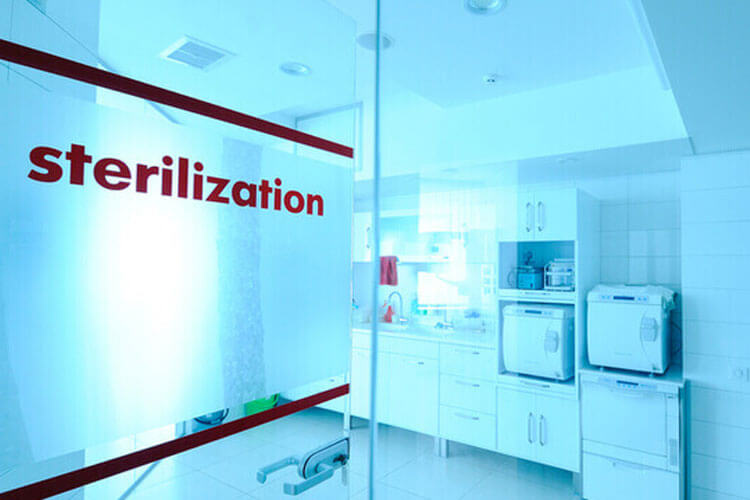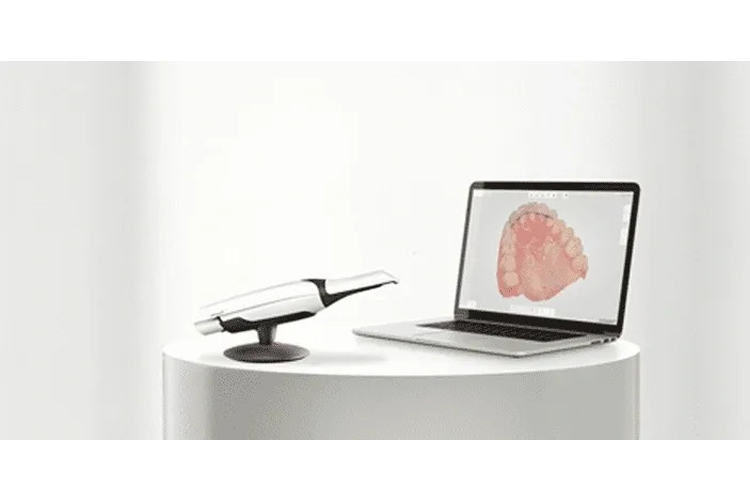Due to the circumstances of Covid-19 in Canada, sterility protocols are even higher on everyone’s mind.
New research has highlighted the difference between the sterility of “digital” versus older “legacy” dental techniques. A dental impression is a standard procedure that leaves a negative imprint on the mouth. The imprint, in turn, is used to make a model or “positive reproduction”. The way St. Lawrence Dentistry works with dental labs lab is changing. Traditionally dentistry involves sending a physical impression of the patient’s mouth to a dental lab. The new modern approach consists of making a digital file using intraoral scanners. Digital technology has eliminated all the physical variables in dental impression-taking and model fabrication. Dr. Hawryluk feels the enhanced sterility of its use and other benefits are clear. Hence, St. Lawrence Dentistry has switched from traditional to digital impressions to serve the Mississauga community.
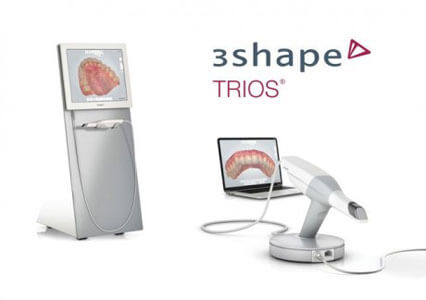
St. Lawrence Dentistry uses 3Shape TRIOS digital technology, which offers much more than just a digital impression. It provides award-winning wireless scan technology and the unrivaled open TRIOS ecosystem with total integration with the worldwide dental community. There are so many benefits from Trios digitization, and they keep expanding. Improving workflows increased patient comfort, and more flexibility are just a few of these benefits. Digitization also helps deliver higher quality dentistry more efficiently by enhancing the functional and esthetic results. It has led to delighted Mississauga dental patients and differentiates St. Lawrence Dentistry. The Trios software is continually updated, excites and involves patients in the proposed treatment, reduces their time at the dental office, offers new treatment opportunities, and most importantly, is a more sterile and safe way of providing dental care.
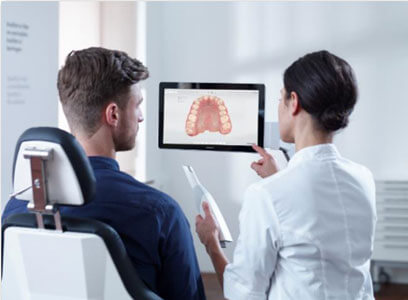
A weak link in the sterility chain in dentistry has been the taking of impressions. For years, dentists took molds from people’s mouths to make crowns and appliances by putting trays filled with paste into people’s mouths. Before one can take a conventional impression, there are many items to prepare and, consequently, many surfaces/materials for human handling. These are mixing tips, impression materials, bowls, countertops, and water dishes and waxes. After preparing the material, it is put in the patient’s mouth, then taken out of the dental room for packaging. A delivery person then picks it up and delivers it to the dental lab. It is impossible to completely disinfect conventional impressions as you cannot put an impression in a steam sterilizer. Instead, they are “sprayed” with a germicidal agent, which is partially helpful. Then, the dentist would transfer them to the dental lab in a wet bag. Remember, this has just come from a patient’s mouth! The dental office, driver, and lab must handle such an impression. Every step in this traditional workflow is a chance for viral and bacterial transmission.
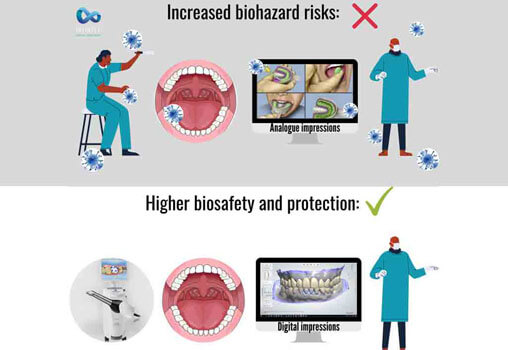
Thanks to the new Trios Digital technology, all this can be accomplished digitally, effectively stopping any cross-contamination risk. With the Trios scanning system, there is no handling of contaminated materials. Hence there is no chance of bacterial or virus transmission because there is no carrying material contaminated with saliva. The data is scanned and emailed to the lab via 3Shapes “communicate” software.
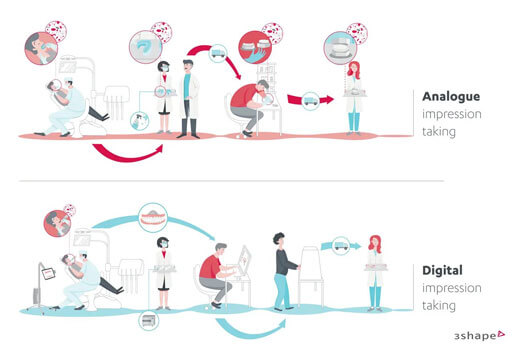
Items returned from dental labs to dental clinics can also become an infection source. Labs must disinfect conventional impressions from clinics to ensure the set dental cast does not contain microorganisms, which can reside within the material and remain vital for up to 7 days. Using digital impressions drastically reduces the risk of cross-contamination since all fabrication is digital. Trios digital software allows the manufacture of dental appliances such as crowns and night guards without touching them in the fabrication process. The dental prosthetics are milled by a CAD-CAM system instead of manually made on a technician’s workbench. Manual creation of appliances/restorations increases contamination risks in the lab. Traditional production of dental restorations/appliances provides additional opportunities for contamination. Therefore, they require disinfecting, which extends the processing time. Digital scans with TRIOS do not require any disinfection or physical transportation from the clinic to the lab, making any transmission risk virtually zero. The Trios tips used to take digital scans can be sterilized entirely according to IPAC protocols using St. Lawrence Dentistry’s hospital-grade M11 Midmark autoclaves.
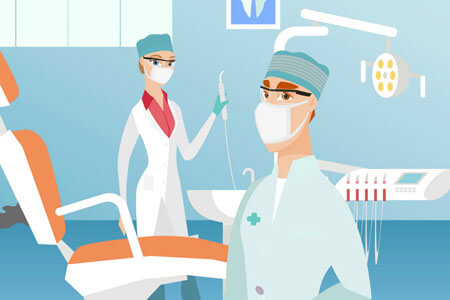
Dr. Hawryluk expects worldwide intraoral scanner use to double or triple in the next couple of years as it is becoming evident that this is the new standard in dental care. Moreover, Mississauga residents and beyond have increased access to information, driving their preferences for digital technology. So, see for yourself and drop into St. Lawrence Dentistry. We would love to show you what digital dentistry offers.
- Sleep Dentistry: Enhancing Comfort and Care During Dental Procedures - July 11, 2024
- The Revolutionary Injection Molding Technique for Composite Veneers - June 27, 2024
- Why Are Third Molars Called “Wisdom Teeth”? - June 19, 2024



